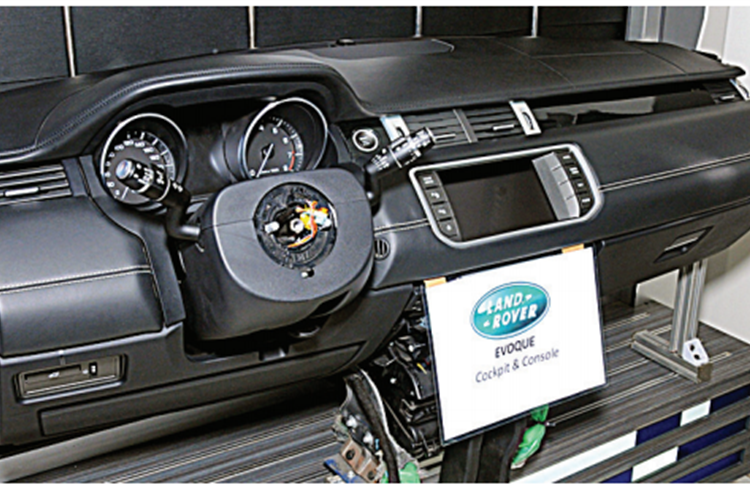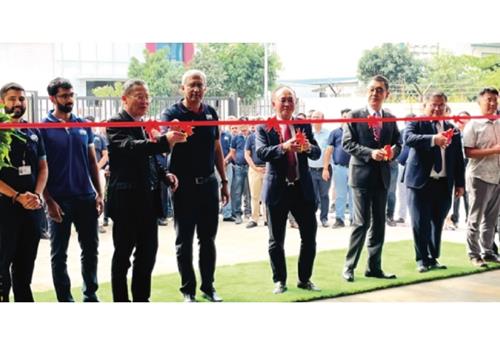Lightweighting to drive IAC's product development for India
Lightweighting is acknowledged as a megatrend by industry stakeholders globally. Engineering plastics is one broad vertical, which has seen large investments in new R&D projects.
As the focus on reducing vehicle weight sharpens across vehicle segments and the component supply chain, this global supplier of instrument panels, console systems, door panels, headliners and overhead systems is looking to consolidate operations in India.
Engineered plastics are fast gaining ground in the automotive industry as it prepares to deal with newer challenges. These challenges primarily originate from two goals the global industry is chasing – cutting down on vehicular emissions and improving fuel economy.
While advancements in fuel economy figures are largely driven by OEMs and market demand, it is the environmental regulations that are fiercely compelling automakers to cut down on emissions. This has fast-forwarded research in newer propulsion technologies such as hybrids and battery electric alongside the drive to cut down overall vehicle weight.
Lightweighting is acknowledged as a megatrend by industry stakeholders globally. Engineering plastics is one broad vertical, which has seen large investments in new R&D projects. The aim is to replace metal parts with advanced engineering plastics that can offer similar properties and functionalities, thereby cutting down weight wherever it is viable.

Talking to Autocar Professional in this context, PC Jayan, director, engineering, IAC India, says, “By the year 2020, the automotive market is expected to grow to 100 million new vehicles per year. The trend of lightweighting in transport industry has become a major theme of research in recent years, the main goals being anticipated fuel savings and meeting stricter environmental legislations in various jurisdictions such as Europe, North America, and Asia. This has led to component manufacturers across the world to come up with lightweight solutions for their OEM customers.”
According to a forecast by global management consulting firm A.T. Kearney, plastics will account for 18 percent of the average vehicle weight by 2020, up from 14 percent in 2000. The forecast also highlights that the contribution of metals will reduce from 61 percent (in 2010) to 55 percent in 2020 in the average vehicle weight, which is roughly assumed to be 1,100kg.
“Ironically, another fuel efficiency trend – electric powertrains – results in heavier cars. While standard engines account for about 12 percent of a car’s total weight, electric powertrains account for 20 percent due to the extra-heavy battery. To preserve optimum fuel efficiency, automakers are using materials that are more lightweight – plastics and polymerbased components,” quotes the AT Kearney study, explaining that EVs will further push the R&D efforts around lightweighting.
Jayan, who goes by the average plastic contribution to the tune of 12-14 percent of overall vehicle weight, says, “With the upcoming BS VI norms, every OEM would strive for weight reduction and this would be a major challenge to bring (new lightweight) technologies in (vehicle) interiors. This would mean there would be more lightweight material such as aluminium and plastic composites, which will find applications.”
“We are working with OEMs on various initiatives including lightweighting technologies and providing better NVH (noise, vibration and harshness) insulations inside the cabin. OEMs are paying a lot of attention on improving the interior experience of the passengers and aim to bring richer feel inside the cabin through refining ambient lighting, offering soft surface materials and through other parameters,” he further adds.
NEW INNOVATIONS AND R&D

IAC’s core product portfolio includes cockpits and floor consoles, door trim and overheads, which it supplies to OEMs like Mahindra & Mahindra, Fiat Chrysler, Maruti Suzuki, VW India, Volvo Eicher and others. It claims to have developed new lightweight products (for interiors) that are also eco-friendly. According to Jayan, IAC follows processes and invests in developing new products that help reduce the environmental impact by using recyclable materials and supporting efficient manufacturing.

“IAC India has established various products, which have been designed, engineered and manufactured in our plants in India. These include cockpits, floor console, door trims, overheads and TPO flooring. Few of our latest innovations in lightweight products include low density PU foam for headliner systems, which will enable us to produce accoustic sandwitch constructions. This will help us improve the absorption targets in the vehicle to meet the NVH performances,” says Jayan.
“Other developments, which have been launched successfully and are in production would include replacement of metal reinforcement to plastic structures for instrument panel, floor consoles, lightweight TPO flooring modules and others.”

IAC’s Pune-based engineering centre is one budding R&D unit in the supplier’s global scheme of things. While it supports the domestic projects, it also is a valuable footprint within the chain of 20 technical and engineering centres globally. “Our engineering centre in Pune will also focus on developing functional prototypes for consumer / customer clinics and feedback, reverse engineering, benchmarking and simulations through CAE. With 20 technical and engineering centres around the world, our Pune-based unit is part of IAC’s global R&D network, which brings together global resources, new solutions and regional best practices that we can extend to our unique customer needs in every region,” he reveals.
IAC is also betting big on engineering plastics that can replace metals. Throwing light on its upcoming program(s), Jayan states, “We are currently engaged in various design and engineering programs for metal replacement / thin walled injection molded interior commodities in plastic composite, which will bring in significant value to the auto industry. Our upcoming manufacturing facilities in India are already working on products, which will be in mass production by the next quarter.”
The company is currently expanding its existing plants in Manesar and Chakan and is setting up a new plant in Nashik. The investment details, however, remain undisclosed.
(This article was first published in the October 15, 2017 print edition of Autocar Professional)
RELATED ARTICLES
BRANDED CONTENT: Serving India’s EV ecosystem
Shimnit Integrated Solutions Pvt. Ltd. (SISPL), a subsidiary of Mumbai's leading high-security number plate supplier, Sh...
Driving EV business with agility and flexibility
CEOs from the EV startup ecosystem met in Bengaluru and Pune to discuss the challenges and business opportunities.
BRANDED CONTENT: SM Auto and Gotech energy inaugurate their first battery pack assembly plant in Pune
Pune-based SM Auto Engineering (SMA), a leading automotive component system manufacturer and its partner Gotech Energy (...





 04 Nov 2017
04 Nov 2017
 11467 Views
11467 Views





 Autocar Pro News Desk
Autocar Pro News Desk




